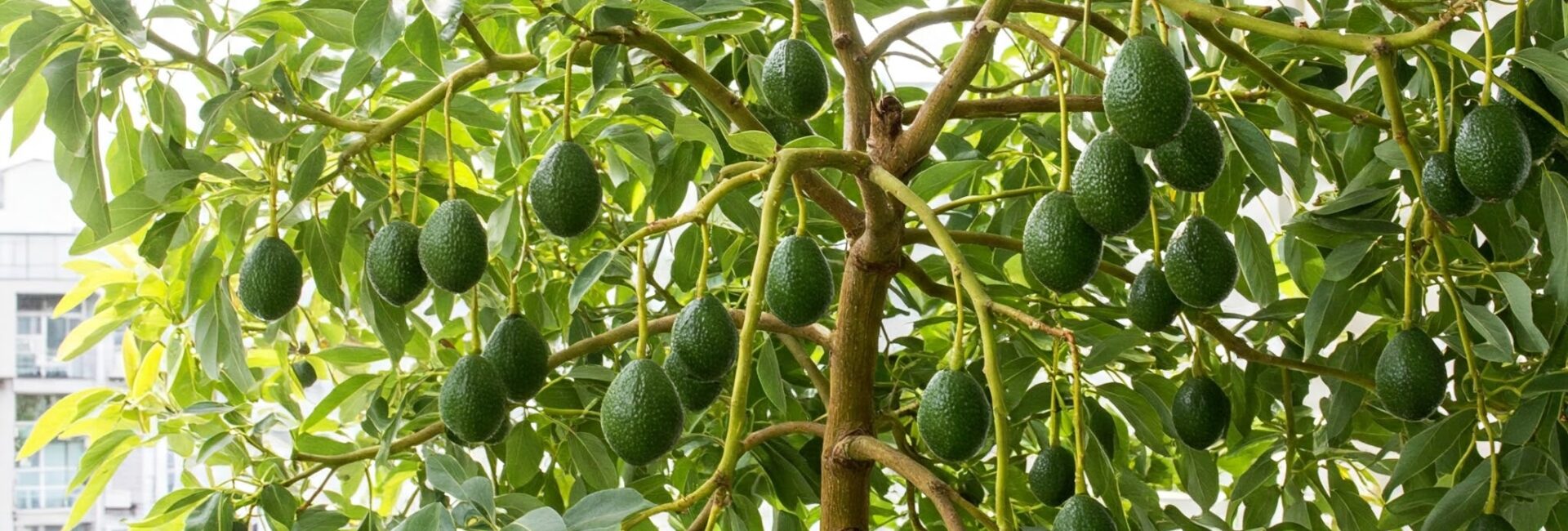Step-by-Step Planting Guide:
- Prepare the pot: Place gravel or clay shards at the bottom for extra drainage.
- Fill with soil: Fill halfway with your soil mix.
- Remove the tree from nursery pot: Gently loosen the root ball without damaging roots.
- Plant at the same depth: The graft union (a scarred bump) should stay above soil line.
- Backfill and firm: Add soil, tamp lightly, and water thoroughly.
- Mulch lightly: Keep mulch a few inches away from the trunk to prevent rot.
Chapter 5: Watering and Feeding
Watering:
- Water deeply but infrequently.
- Wait until the top 2 inches of soil are dry before re-watering.
- In summer, you may water 2-3 times a week; in winter, once every 10-14 days.
- Always let excess water drain completely.
Fertilizing:
Avocados are heavy feeders. Use a balanced citrus or avocado fertilizer high in nitrogen (N), such as 7-4-2. Feed as follows:
- Early spring: Begin feeding monthly
- Summer: Increase to every two weeks
- Fall: Feed monthly until mid-autumn
- Winter: Stop fertilizing until spring
For organic options, try:
- Compost tea
- Worm castings
- Seaweed extract
Chapter 6: Sunlight and Temperature Needs
Avocados love sunlight but dislike extremes.
- Sunlight: Minimum 6 hours/day of direct light
- Ideal location: South- or west-facing balcony, patio, or window
- Temperature range: 60–85°F (15–29°C)
Protect the tree from frost by:
- Bringing pots indoors or into a greenhouse in winter
- Wrapping the pot in insulation
- Using frost cloths over the canopy
Chapter 7: Pruning and Training
Pruning keeps your potted avocado manageable and encourages branching.
- Begin pruning when tree reaches 2-3 feet tall
- Pinch off new top growth to encourage lateral branching
- Remove weak or crowded branches
- In winter, prune for shape and airflow
Training the tree into a bushy form also supports fruiting, which occurs on new wood.
Chapter 8: Flowering and Pollination
Avocado trees produce two types of flowers:
- Type A: Open female in morning, male in afternoon (e.g., Hass, Gwen)
- Type B: Open male in morning, female in afternoon (e.g., Bacon, Fuerte)
To increase fruit set:
- Grow both A and B types if possible
- Place plants close together
- Use a small paintbrush to manually pollinate
Even self-fertile varieties like Wurtz produce better with a pollination partner.
Chapter 9: Pest and Disease Management
Avocados are generally hardy but watch out for these pests:
- Spider mites: Spray with neem oil or insecticidal soap
- Aphids: Remove with water spray or neem oil
- Scale insects: Scrape off and apply horticultural oil
- Fungus gnats: Reduce watering and use sticky traps
Diseases:
- Root rot (from overwatering): Prevent by ensuring good drainage
- Anthracnose (fungal): Prune affected branches and improve airflow
Chapter 10: Harvesting and Storing Avocados
One unique aspect of avocados is that they do not ripen on the tree.
- Wait until fruits reach mature size (8–12 months after flowering)
- Pick one and let it ripen indoors (7–10 days)
- If it ripens well, harvest the rest
- Use clean pruning shears and leave a short stem
Storage tips:
- Ripen at room temperature
- Store ripe fruit in fridge up to 7 days
- Freeze mashed avocado with lemon juice in airtight containers
Chapter 11: Troubleshooting Common Issues
Leaves turning yellow? Likely overwatering or nitrogen deficiency.
Brown tips on leaves? Often salt buildup—flush the soil thoroughly every few months.
No flowers or fruit? May be too young, not enough light, or lacking pollination.
Tree getting leggy? Needs more sun or strategic pruning.
Chapter 12: The Joy of Homegrown Avocados
Growing avocados in pots may take patience, but the journey is as rewarding as the destination. Tending to your tree, watching it grow, and eventually picking fruit from your own patio or balcony is an incredibly satisfying experience. You’ll reduce your grocery bill, cut food miles, and gain a deeper appreciation for this remarkable fruit




